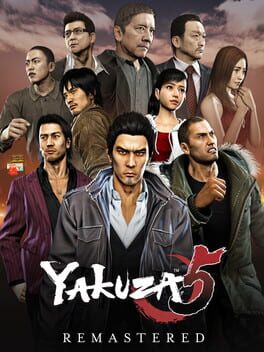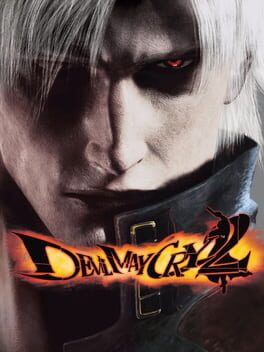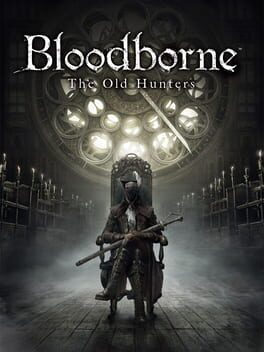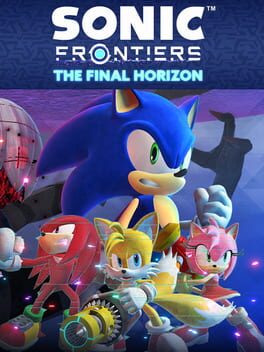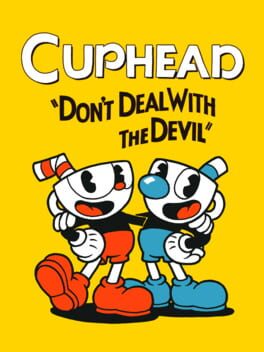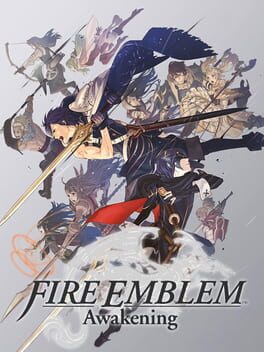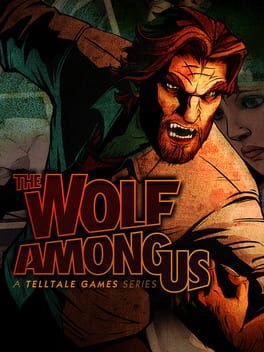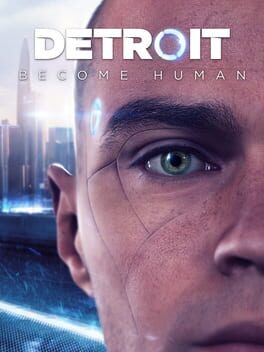102 reviews liked by BluesBebop
Yakuza 5 Remastered
2019
[See coments to expanded Review]
Me: this game has a terrible structure, it's unnecessarily long and its so filled with content that it completely loses its focus. Maybe Yakuza 0 it's similar in length, but due to its structure, script and excess of content, this feels by far the longest and most irregular title of the franchise. We shouldn't keep saying that your time is well expent in titles that "really get good after 90 hours", and Yakuza 5, in times, is that kind of game.
Also me after 90 hours in the finale as my tears fell and I scream and the TV full of excitement: MAN THIS GAME WAS SO GOOD.
Me: this game has a terrible structure, it's unnecessarily long and its so filled with content that it completely loses its focus. Maybe Yakuza 0 it's similar in length, but due to its structure, script and excess of content, this feels by far the longest and most irregular title of the franchise. We shouldn't keep saying that your time is well expent in titles that "really get good after 90 hours", and Yakuza 5, in times, is that kind of game.
Also me after 90 hours in the finale as my tears fell and I scream and the TV full of excitement: MAN THIS GAME WAS SO GOOD.
Devil May Cry 2
2003
Lies of P
2023
Cuphead
2017
it feels somewhat rare that an indie game really captures a retro style in a way that does more than pay lip-service to its predecessors. shovel knight was one of those games: a pitch-perfect recreation of NES-style action challenges stripped away of the mechanical uncertainty of the actual games of that era. cuphead captures that for the run-and-gun in a way that makes it not only a loving tribute but a legitimate cornerstone in the genre.
cuphead feels borne by a rigorous design methodology that demonstrates a deep understanding of the fundamentals of boss design in a 2D space. each fight is undergirded by the movement and platform features; this is generally the unifying trait. plenty of fights take place on a featureless flat ground, but very quickly wrinkles such as scrolling, conveyors, limited platforms, or combinations of these are introduced. a great late-game example is the ghost train stage that features of a platform that can and must be moved between left, center, and right using parry controls. these establish for the player the laws of their dominion so to speak: what space can the player leverage? what options exist at any given time to dodge a certain obstacle?
with each phase then comes the primary attack. bosses generally lack dynamic reactive capabilities unlike a human, so they are incapable of mindgames generally speaking. thus, in virtually all boss fights the boss cycles between random attacks that the player must apply a counterstrategy against. in modern games the design parlance is as such: windup animation begets the attack proper begets an opening for a player to either 1) rest if their counterstrategy is not efficient enough to yield a counterattack or 2) counterattack. too unthreatening and the player barely needs to muster a counterattack, and too overpowered and the player will have no time to respond. cuphead weaves in a truly surprising variety of primaries to challenge the player: the enemy may momentarily remove the player's control of the space, such as with the cat at the end of the rat tank fight batting its paws to swat the right and left sides of the screen, or perhaps the enemy creates antagonistic autonomous elements that force the player to utilize their spatial reasoning and pattern recognition to deduce a projectile's movement habits and shift their position accordingly, such as in the bee queen's middle phase where she incorporates stochaistically-drifting geometric projectiles as well as bullets that move in a linear back-and-forth climb on either side of the screen.
primary attacks on their own are only a lock-and-key design principle: find the counterstrategy that works against a particular move and apply it when needed. what creates true tension in the fight are the auxillary attacks. virtually all bosses are able to separately cycle through auxillary attacks that generally involve an entirely separate on-screen entity attacking on their own accord out of sync with the primary opponent. auxillary attacks on their own already heighten the experience by creating a space-constraint intersection that forces the player to adapt their key to more than just a single lock. certain intersections of attacks may prevent successful counterattacks or force the player to fall back on safer strategies, thus making the risk-and-reward judgment more critical and ever mutating. where cuphead really succeeds is having the auxillary attacks cycle as well. it's much like having three basic collared shirts and three basic ties: the combinations they present give you nine outfits, yielding an multiplicative amount of potential attack intersections. phase one of the sea medusa fight is a great example of this: three primary attacks (either summoning ghost projectiles or bringing one of two different fish out of the water with their own projectiles) with three auxillary attacks (staggered puffer fish projectiles, a water jet that forces a positive y velocity, and bombs that explode with a octagonal bullet pattern). each on their own is manageable, but combined there is an additional level of fluidity demanded of the player with adapting on the fly to intersections they may have never seen before.
of course cuphead doesn't simply hew to these elements in every fight; it expands on them and plays with the potential they possess. take the pirate ship fight: this begins with both a small primary attack (pellets fired by the captain one by one) with an auxillary component (a barrel that moves back and forth at the top of the screen, attempting to crush the player when they pass underneath). within time the captain will begin preempting his own pellet attack with a cycle of attacks from different sources, each with their own tell: a shark that consumes the left half of the screen, small bulldog fish(?) that slide across the ground, and a squid that both creates a fountain of bullets and can turn the screen dark if not defeated in time. on its own this is a perfectly interesting fight: manage the primary and auxillary attacks while being cognizant of primary attacks from external components via tells. however, in the second phase, the ship itself begins shooting cannonballs on a timer. at this point the player must not only manage transient attacks from the captain but also track the separate rhythms of the barrel and the ship's cannonballs. these intersect in a truly polyrhythmic fashion that pushes the fight into truly challenging territory that feels immensely rewarding to lock in with.
this is also boosted by cuphead having a stellar kit and smooth controls that feel sharp without being too abrupt or linear. his ability to parry specific objects (which are colored pink to distinguish them) adds a scale of mastery of many bullet patterns, with basic familiarity only yielding the ability to dodge while a complete understanding allows navigation to specific bullets for a parry and the reward of extra super meter. the super meter attacks are all rather useful and feel well balanced, though for the full-meter arts I can't really imagine someone using anything other than invincibility. however, I found myself legitimately switching out his shots and charms for different fights, which is not to say I found all of the variety useful (I mainly stuck to chaser and spread along with the smoke dodge and one extra heart depending on the fight), but to require a level of specificity in strategy for each fight encourages me to experiment more than I may otherwise. there are virtually no points of frustration I can attribute to a failure in the controls or a lack of a specific tool; almost every time I was stumped on a particular counterstrategy I always eventually worked something out even if it wasn't optimal.
I would really go as far as to say I don't think cuphead has any particular failings or even elements of unfair frustration that I can think of. while an immensely challenging experience, the primary and auxillary attacks are synergistic in such a way that a given intersection can't truly render an attack undodgeable or debilitating. never did I feel like a particular portion was just inserted because it felt cool or to fill space; rather, every bit of the game feels handled with care and finesse. the dragon fight was the peak of this for me... that particular fight walled me and put me off the game quite a bit. while the exasperation I felt was valid, I could never pinpoint a particular aspect that really felt unfair to me. at the end of the day, those projectiles that explode into smaller projectiles when hit really preyed on my spray-and-pray instincts in a way that punished me (and many others I assume) far more than most games are willing to muster. if I had to name one little thing that did feel off to me, it was the platforms during the bee queen fight. the scrolling part and random gaps don't bother me, but their collision box doesn't feel quite lined up with the art, which sometimes led to me falling randomly in confusing ways.
I do wish the flying stages had the same level of customization as the ground stages, but understandably that's a scope issue and not something I would expect from a small production. the non-boss levels also feel a bit perfunctory, but they are all still fun and only necessary for collecting coins for purchasing items in the shop. both of these won't get in the way of anyone looking to experience this: the core of the gameplay is still the tremendous boss fights. this has given me a a nice little kick in the pants to go back and dive into the early 16-bit fundamental works that helped mold this into the genius showpiece that it is.
cuphead feels borne by a rigorous design methodology that demonstrates a deep understanding of the fundamentals of boss design in a 2D space. each fight is undergirded by the movement and platform features; this is generally the unifying trait. plenty of fights take place on a featureless flat ground, but very quickly wrinkles such as scrolling, conveyors, limited platforms, or combinations of these are introduced. a great late-game example is the ghost train stage that features of a platform that can and must be moved between left, center, and right using parry controls. these establish for the player the laws of their dominion so to speak: what space can the player leverage? what options exist at any given time to dodge a certain obstacle?
with each phase then comes the primary attack. bosses generally lack dynamic reactive capabilities unlike a human, so they are incapable of mindgames generally speaking. thus, in virtually all boss fights the boss cycles between random attacks that the player must apply a counterstrategy against. in modern games the design parlance is as such: windup animation begets the attack proper begets an opening for a player to either 1) rest if their counterstrategy is not efficient enough to yield a counterattack or 2) counterattack. too unthreatening and the player barely needs to muster a counterattack, and too overpowered and the player will have no time to respond. cuphead weaves in a truly surprising variety of primaries to challenge the player: the enemy may momentarily remove the player's control of the space, such as with the cat at the end of the rat tank fight batting its paws to swat the right and left sides of the screen, or perhaps the enemy creates antagonistic autonomous elements that force the player to utilize their spatial reasoning and pattern recognition to deduce a projectile's movement habits and shift their position accordingly, such as in the bee queen's middle phase where she incorporates stochaistically-drifting geometric projectiles as well as bullets that move in a linear back-and-forth climb on either side of the screen.
primary attacks on their own are only a lock-and-key design principle: find the counterstrategy that works against a particular move and apply it when needed. what creates true tension in the fight are the auxillary attacks. virtually all bosses are able to separately cycle through auxillary attacks that generally involve an entirely separate on-screen entity attacking on their own accord out of sync with the primary opponent. auxillary attacks on their own already heighten the experience by creating a space-constraint intersection that forces the player to adapt their key to more than just a single lock. certain intersections of attacks may prevent successful counterattacks or force the player to fall back on safer strategies, thus making the risk-and-reward judgment more critical and ever mutating. where cuphead really succeeds is having the auxillary attacks cycle as well. it's much like having three basic collared shirts and three basic ties: the combinations they present give you nine outfits, yielding an multiplicative amount of potential attack intersections. phase one of the sea medusa fight is a great example of this: three primary attacks (either summoning ghost projectiles or bringing one of two different fish out of the water with their own projectiles) with three auxillary attacks (staggered puffer fish projectiles, a water jet that forces a positive y velocity, and bombs that explode with a octagonal bullet pattern). each on their own is manageable, but combined there is an additional level of fluidity demanded of the player with adapting on the fly to intersections they may have never seen before.
of course cuphead doesn't simply hew to these elements in every fight; it expands on them and plays with the potential they possess. take the pirate ship fight: this begins with both a small primary attack (pellets fired by the captain one by one) with an auxillary component (a barrel that moves back and forth at the top of the screen, attempting to crush the player when they pass underneath). within time the captain will begin preempting his own pellet attack with a cycle of attacks from different sources, each with their own tell: a shark that consumes the left half of the screen, small bulldog fish(?) that slide across the ground, and a squid that both creates a fountain of bullets and can turn the screen dark if not defeated in time. on its own this is a perfectly interesting fight: manage the primary and auxillary attacks while being cognizant of primary attacks from external components via tells. however, in the second phase, the ship itself begins shooting cannonballs on a timer. at this point the player must not only manage transient attacks from the captain but also track the separate rhythms of the barrel and the ship's cannonballs. these intersect in a truly polyrhythmic fashion that pushes the fight into truly challenging territory that feels immensely rewarding to lock in with.
this is also boosted by cuphead having a stellar kit and smooth controls that feel sharp without being too abrupt or linear. his ability to parry specific objects (which are colored pink to distinguish them) adds a scale of mastery of many bullet patterns, with basic familiarity only yielding the ability to dodge while a complete understanding allows navigation to specific bullets for a parry and the reward of extra super meter. the super meter attacks are all rather useful and feel well balanced, though for the full-meter arts I can't really imagine someone using anything other than invincibility. however, I found myself legitimately switching out his shots and charms for different fights, which is not to say I found all of the variety useful (I mainly stuck to chaser and spread along with the smoke dodge and one extra heart depending on the fight), but to require a level of specificity in strategy for each fight encourages me to experiment more than I may otherwise. there are virtually no points of frustration I can attribute to a failure in the controls or a lack of a specific tool; almost every time I was stumped on a particular counterstrategy I always eventually worked something out even if it wasn't optimal.
I would really go as far as to say I don't think cuphead has any particular failings or even elements of unfair frustration that I can think of. while an immensely challenging experience, the primary and auxillary attacks are synergistic in such a way that a given intersection can't truly render an attack undodgeable or debilitating. never did I feel like a particular portion was just inserted because it felt cool or to fill space; rather, every bit of the game feels handled with care and finesse. the dragon fight was the peak of this for me... that particular fight walled me and put me off the game quite a bit. while the exasperation I felt was valid, I could never pinpoint a particular aspect that really felt unfair to me. at the end of the day, those projectiles that explode into smaller projectiles when hit really preyed on my spray-and-pray instincts in a way that punished me (and many others I assume) far more than most games are willing to muster. if I had to name one little thing that did feel off to me, it was the platforms during the bee queen fight. the scrolling part and random gaps don't bother me, but their collision box doesn't feel quite lined up with the art, which sometimes led to me falling randomly in confusing ways.
I do wish the flying stages had the same level of customization as the ground stages, but understandably that's a scope issue and not something I would expect from a small production. the non-boss levels also feel a bit perfunctory, but they are all still fun and only necessary for collecting coins for purchasing items in the shop. both of these won't get in the way of anyone looking to experience this: the core of the gameplay is still the tremendous boss fights. this has given me a a nice little kick in the pants to go back and dive into the early 16-bit fundamental works that helped mold this into the genius showpiece that it is.
The Wolf Among Us
2013
Tears of the Kingdom is a really weird game to talk about, because I feel like I should enjoy it a lot more than I do. I ended up playing the game for 150 hours, I ended up getting all the shrines (though definitely not 100%ing...), but I don't know that I fully enjoyed those 150 hours. There was a lot of the game that was just downtime where I was going through the motions, and it was never straight up unenjoyable, but I also don't know if I'd say that the game has 150 hours worth of content - rather that's just how long it took me to go through it.
I feel like ToTK 's content gets less interesting as you play through it. Exploring the depths was fun at the start, when fog busting was novel and it hadn't gotten tedious yet, but it got tedious by the end of the game. While there are vehicles you can use, all it does is make boring content go by faster, as there's very little interesting to discover in the depths. It's basically just currency to upgrade your battery, armor you're never going to use, and resources. It overstayed its welcome. The same can be said of exploring the sky. It was novel at first, and then the sheer amount of copy pasted islands with similar puzzles got a little tiring. Even the labyrinths suffer from the same problem. The first time I found one, and explored it from start to finish, I was amazed. It was a super novel experience. And then all three are formated the exact same way, which eats away at how interesting it was to explore them.
Building stuff was interesting in theory, but in practice I found it took way too long. You could use autobuild, but even that isn't perfect since you needed to either spend zonite or take the parts out of your inventory ahead of time, which was a little tedious. Building anything new took forever, too. The time between finding a solution, and actually executing that solution, was too long. A lot of the time I just found myself finding other ways to travel (gliding, spamming the same plane model, horse) rather than building anything novel. That aside, I don't like that it allows you to clear puzzles in such a wide variety of probably not intended ways. The feeling of "Eh, definitely not the intended solution, but good enough." is just not one that I actually enjoy, especially when that solution is so often "just use a rocket/just use a generic fan + control stick vehicle/just build a long stick or bridge."
Combat is just as fundamentally broken as it was in Breath of the Wild. I enjoy it more, because I don't feel like it's a dark hole of resources I'll never get back thanks to the fusion system, but Zelda combat should just not be about RPG numbers, at least defensively. Offensively it's mostly fine since they mix in goobers alongside the big boys, so you still get to feel yourself becoming more powerful, but defensively it's just ridiculous. You can just upgrade the hylian set for nearly no materials and just... take no damage from enemies. And conversely, it means that whenever you're wearing something other than your hylian set, you take a ton of damage, more than is probably reasonable. And since it takes forever to upgrade armor outside the hylian set, I just end up not bothering. Hell, a lot of the utility ones barely feel like they matter. The one that lets you climb in the rain barely feels like it does everything, even with the full set.
Shrines were OK. Not much to say about them, there was a lot of them, most of them had creative ideas, but they were often too short to scratch the same itch as a dungeon would. Likewise, I don't really care for the dungeons in this game. I liked the approach and build up to the dungeons almost universally more than I enjoyed the dungeons themselves. The Divine Beast style of just finding 5 things then going back to the central room to fight the boss just isn't interesting to me. At least there's more variety aesthetically than there was with divine beasts.
Story wise, it feels like the game is being held back by the way that the game is set up. The story can be found out of order when it comes to stuff like Zelda's tears or the master sword, and then conversely they're so obsessed with the idea that they have to make sure you get the story in order-ish that the cutscenes for all temples are copy pated. It's not a bad story, I like it conceptually, I like elements of it, but I hate how it's told because of the open world nature of the game.
All in all, TOTK is just a really weird game for me. I had a really good time early on, and while it never fully lost its steam (I still completed it), I also feel like I'd have enjoyed it more if I just ended the game early rather than actually going for all shrines and map completion. There was just a lot of the time where I was coasting through the game rather than fully enjoying myself.
I feel like ToTK 's content gets less interesting as you play through it. Exploring the depths was fun at the start, when fog busting was novel and it hadn't gotten tedious yet, but it got tedious by the end of the game. While there are vehicles you can use, all it does is make boring content go by faster, as there's very little interesting to discover in the depths. It's basically just currency to upgrade your battery, armor you're never going to use, and resources. It overstayed its welcome. The same can be said of exploring the sky. It was novel at first, and then the sheer amount of copy pasted islands with similar puzzles got a little tiring. Even the labyrinths suffer from the same problem. The first time I found one, and explored it from start to finish, I was amazed. It was a super novel experience. And then all three are formated the exact same way, which eats away at how interesting it was to explore them.
Building stuff was interesting in theory, but in practice I found it took way too long. You could use autobuild, but even that isn't perfect since you needed to either spend zonite or take the parts out of your inventory ahead of time, which was a little tedious. Building anything new took forever, too. The time between finding a solution, and actually executing that solution, was too long. A lot of the time I just found myself finding other ways to travel (gliding, spamming the same plane model, horse) rather than building anything novel. That aside, I don't like that it allows you to clear puzzles in such a wide variety of probably not intended ways. The feeling of "Eh, definitely not the intended solution, but good enough." is just not one that I actually enjoy, especially when that solution is so often "just use a rocket/just use a generic fan + control stick vehicle/just build a long stick or bridge."
Combat is just as fundamentally broken as it was in Breath of the Wild. I enjoy it more, because I don't feel like it's a dark hole of resources I'll never get back thanks to the fusion system, but Zelda combat should just not be about RPG numbers, at least defensively. Offensively it's mostly fine since they mix in goobers alongside the big boys, so you still get to feel yourself becoming more powerful, but defensively it's just ridiculous. You can just upgrade the hylian set for nearly no materials and just... take no damage from enemies. And conversely, it means that whenever you're wearing something other than your hylian set, you take a ton of damage, more than is probably reasonable. And since it takes forever to upgrade armor outside the hylian set, I just end up not bothering. Hell, a lot of the utility ones barely feel like they matter. The one that lets you climb in the rain barely feels like it does everything, even with the full set.
Shrines were OK. Not much to say about them, there was a lot of them, most of them had creative ideas, but they were often too short to scratch the same itch as a dungeon would. Likewise, I don't really care for the dungeons in this game. I liked the approach and build up to the dungeons almost universally more than I enjoyed the dungeons themselves. The Divine Beast style of just finding 5 things then going back to the central room to fight the boss just isn't interesting to me. At least there's more variety aesthetically than there was with divine beasts.
Story wise, it feels like the game is being held back by the way that the game is set up. The story can be found out of order when it comes to stuff like Zelda's tears or the master sword, and then conversely they're so obsessed with the idea that they have to make sure you get the story in order-ish that the cutscenes for all temples are copy pated. It's not a bad story, I like it conceptually, I like elements of it, but I hate how it's told because of the open world nature of the game.
All in all, TOTK is just a really weird game for me. I had a really good time early on, and while it never fully lost its steam (I still completed it), I also feel like I'd have enjoyed it more if I just ended the game early rather than actually going for all shrines and map completion. There was just a lot of the time where I was coasting through the game rather than fully enjoying myself.
